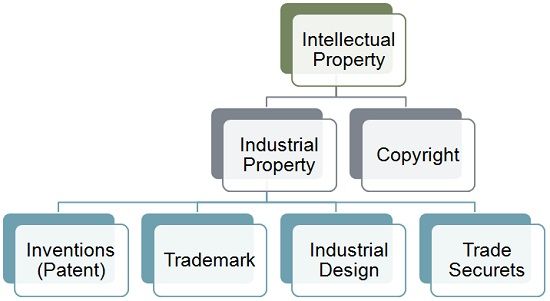Definition: Intellectual Property, as the name suggests, is an intangible property, which is a product of human intellect, capital, labour, etc. such as artistic creations, literary works, inventions and so forth. It is intangible because it cannot be identified with the help of its physical characteristics.
To safeguard the interest of the creators, intellectual property rights are introduced which give them the right over their property and prevents others from using it without the permission of the owner (creator).
Classification of Intellectual Property
Intellectual Property is classified into two parts:
- Industrial Property: Industrial Property alludes to the property that has got protection under intellectual property laws and includes trademark, service mark, designs, patent for the invention, trade secret, utility model, etc.
- Trademark: Trademark refers to an ascertainable sign, symbol or a word determining the source of a particular product. It is used to afford protection to the mark owner, by facilitating restricted rights to use it. When it identifies the service provider, it is called as a service mark. Once registered, the trademark is protected for a definite period, after which it can be renewed by paying a fee.
- Patent: Patent is the protection provided to the inventor for their creation which can be a device or a process. It is a government license, which confers exclusive rights to the inventor, for a specified period, to debar others from creating, using or selling it.
- Design: Otherwise called industrial design, is primarily related to the aesthetic features of a product or system, which makes it more appealing and thus increases its commercial value.
- Trade Secrets: As it is evident from the name, it is the sensitive business information which provides a competitive edge to the firm.
- Copyright: Copyright implies the exclusive rights assigned to the creator or composer of artistic and literary works, for a definite period, to stop others from copying the work. It covers a wide variety of literary works such as novels, poems and plays, films, drama and musical work and artistic creations, e.g. paintings, sculptures, photographs and many more.
WIPO
WIPO stands for World Intellectual Property Organization, was set up in the year 1967 by WIPO Convention. Its headquarters are located in Geneva, Switzerland. Its objective is to provide protection to the intellectual property worldwide.
It is an international body based in United Nation. It works for the development of intellectual property system. It encourages creativity and innovation and also helps in the overall development of the economy.


Leave a Reply